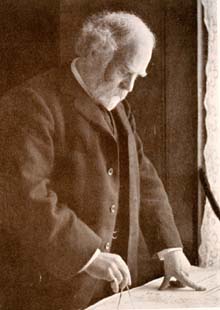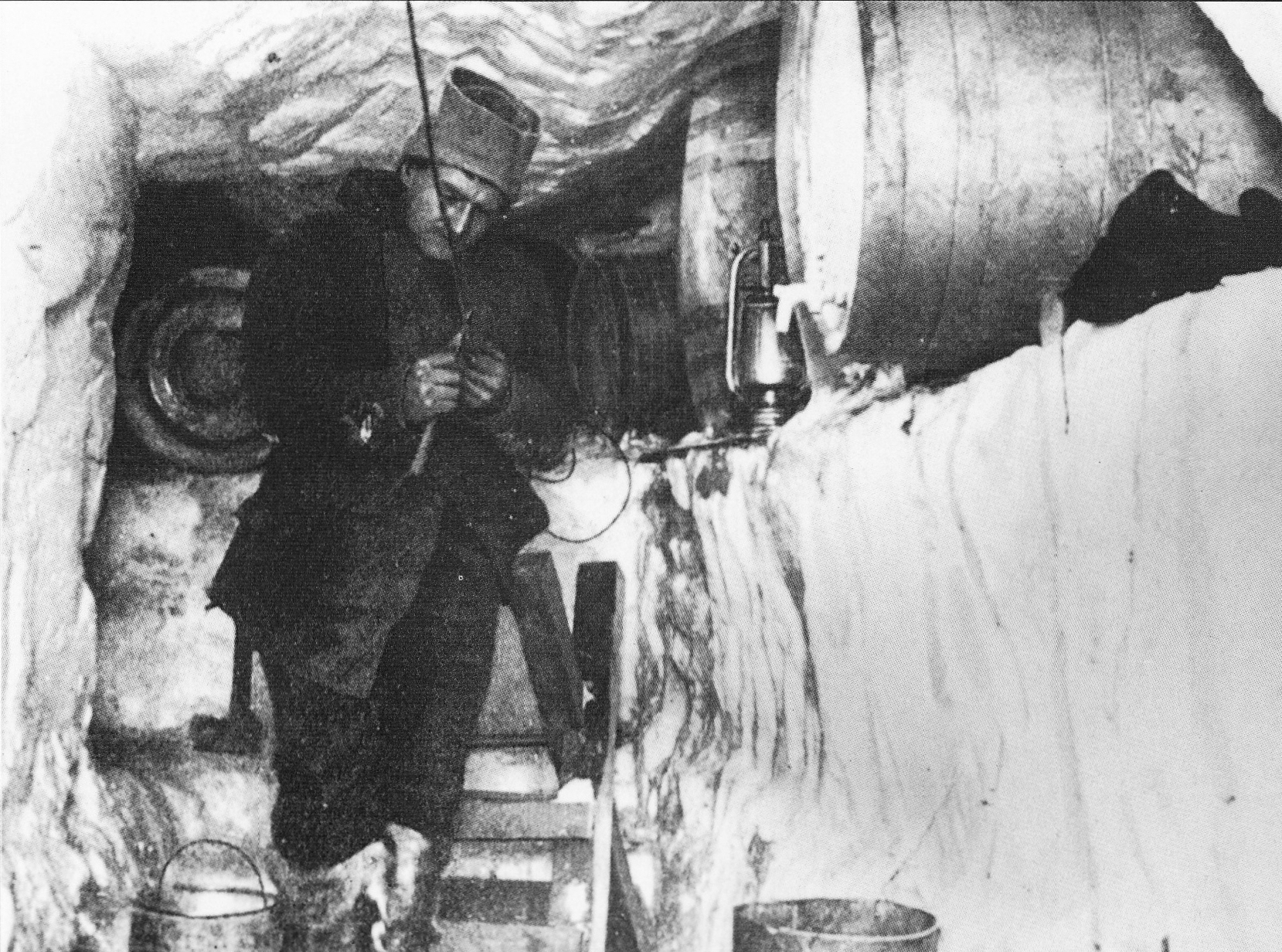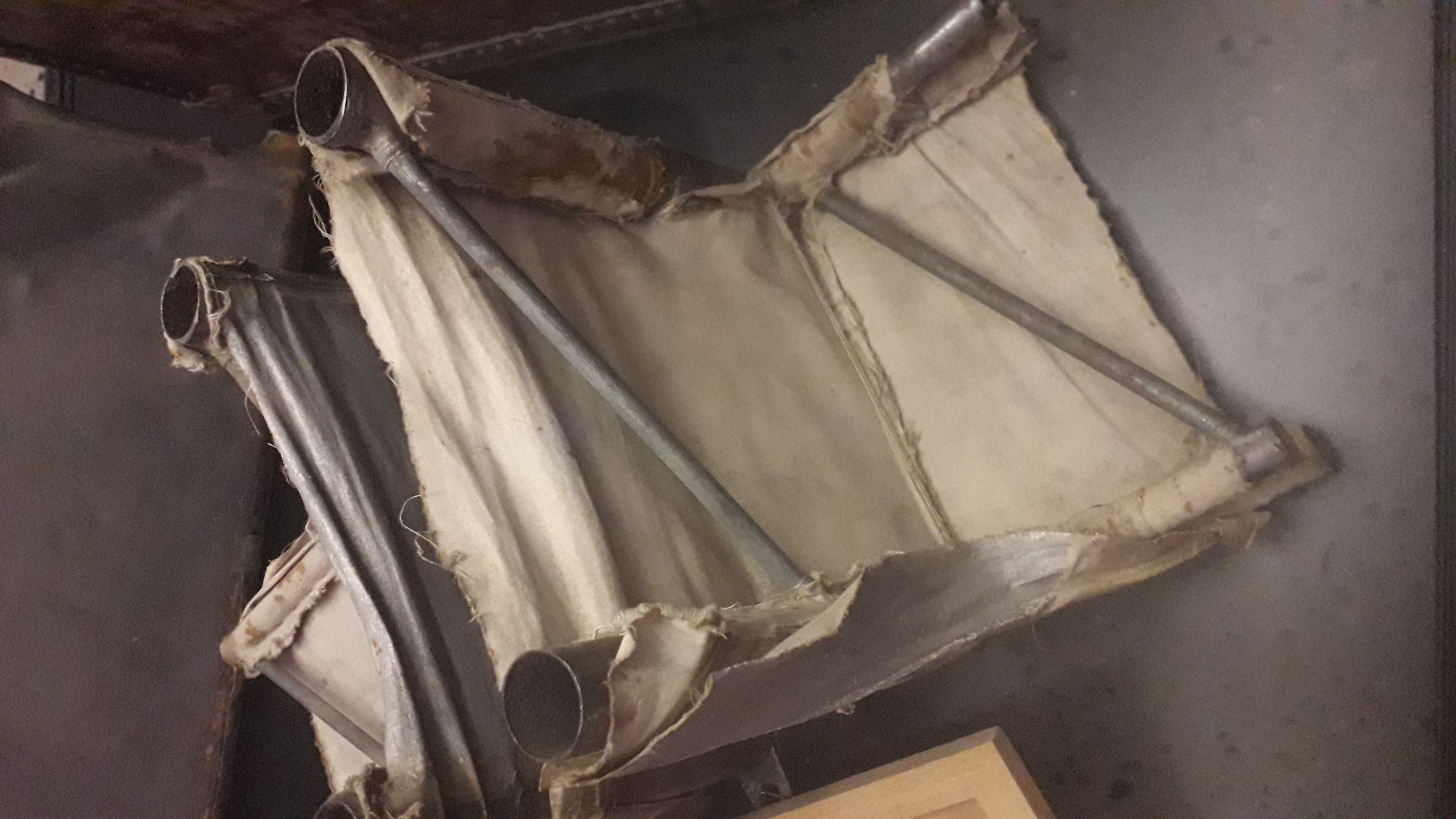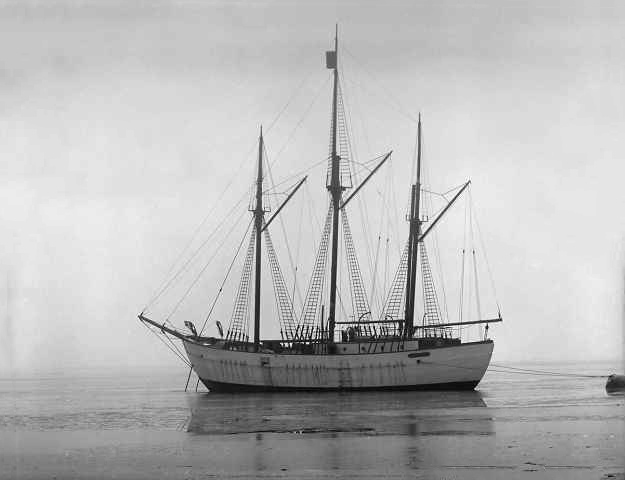|
Amundsen
Roald Engelbregt Gravning Amundsen (, ; ; 16 July 1872 – ) was a Norwegian explorer of polar regions. He was a key figure of the period known as the Heroic Age of Antarctic Exploration. Born in Borge, Østfold, Norway, Amundsen began his career as a polar explorer as first mate on Adrien de Gerlache's Belgian Antarctic Expedition of 1897–1899. From 1903 to 1906, he led the first expedition to successfully traverse the Northwest Passage on the sloop ''Gjøa''. In 1909, Amundsen began planning for a South Pole expedition. He left Norway in June 1910 on the ship ''Fram'' and reached Antarctica in January 1911. His party established a camp at the Bay of Whales and a series of supply depots on the Barrier (now known as the Ross Ice Shelf) before setting out for the pole in October. The party of five, led by Amundsen, became the first to successfully reach the South Pole on 14 December 1911. Following a failed attempt in 1918 to reach the North Pole by traversing the Nor ... [...More Info...] [...Related Items...] OR: [Wikipedia] [Google] [Baidu] |
Amundsen's South Pole Expedition
The first ever expedition to reach the South Pole, geographic Southern Pole was led by the Norwegian explorer Roald Amundsen. He and four others arrived at the pole on 14 December 1911, five weeks ahead of a British party led by Robert Falcon Scott as part of the Terra Nova Expedition. Amundsen and his team returned safely to their base, and later heard that Scott and his four companions had died on their return journey. Amundsen's initial plans had focused on the Arctic and the conquest of the North Pole by means of an extended drift in an icebound ship. He obtained the use of Fridtjof Nansen's polar exploration ship ''Fram (ship), Fram'', and undertook extensive fundraising. Preparations for this expedition were disrupted when, in 1909, the rival American explorers Frederick Cook and Robert Peary each claimed to have reached the North Pole. Amundsen then changed his plan and began to prepare for a conquest of the South Pole; uncertain of the extent to which the public and hi ... [...More Info...] [...Related Items...] OR: [Wikipedia] [Google] [Baidu] |
South Pole
The South Pole, also known as the Geographic South Pole, Terrestrial South Pole or 90th Parallel South, is one of the two points where Earth's axis of rotation intersects its surface. It is the southernmost point on Earth and lies antipodally on the opposite side of Earth from the North Pole, at a distance of 12,430 miles (20,004 km) in all directions. Situated on the continent of Antarctica, it is the site of the United States Amundsen–Scott South Pole Station, which was established in 1956 and has been permanently staffed since that year. The Geographic South Pole is distinct from the South Magnetic Pole, the position of which is defined based on Earth's magnetic field. The South Pole is at the centre of the Southern Hemisphere. Geography For most purposes, the Geographic South Pole is defined as the southern point of the two points where Earth's axis of rotation intersects its surface (the other being the Geographic North Pole). However, Earth's axis of rotat ... [...More Info...] [...Related Items...] OR: [Wikipedia] [Google] [Baidu] |
Gjøa
''Gjøa'' was the first vessel to transit the Northwest Passage. With a crew of six, Roald Amundsen traversed the passage in a three-year journey, finishing in 1906. History Construction The square-sterned sloop of 47 net register tonnage () was built by Knut Johannesson Skaale in Rosendal, Norway in 1872, the same year Amundsen was born. She was named ''Gjøa'' after her then owner's wife. (''Gjøa'' is a modern form of the Norse name ''Gyða'', in turn a nickname for ''Guðfríðr'', a compound of ''guð'' 'god' and ''fríðr'' 'beautiful'.) For the next 28 years the vessel served as a herring fishing boat. Purchase by Amundsen On March 28, 1901, Amundsen bought her from Asbjørn Sexe of Ullensvang, Norway, for his forthcoming expedition to the Arctic Ocean. ''Gjøa'' was much smaller than vessels used by other Arctic expeditions, but Amundsen intended to live off the limited resources of the land and sea through which he was to travel, and reasoned that the land ... [...More Info...] [...Related Items...] OR: [Wikipedia] [Google] [Baidu] |
Heroic Age Of Antarctic Exploration
The Heroic Age of Antarctic Exploration was an era in the exploration of the continent of Antarctica which began at the end of the 19th century, and ended after the First World War; the Shackleton–Rowett Expedition of 1921–1922 is often cited by historians as the dividing line between the "Heroic" and "Mechanical" ages. During the Heroic Age, the Antarctic region became the focus of international efforts that resulted in intensive scientific and geographical exploration by 17 major List of Antarctic expeditions, Antarctic expeditions launched from ten countries.Barczewski, pp. 19–20. The common factor in these expeditions was the limited nature of the resources available to them before advances in Transport in Antarctica, transport and Telecommunications in Antarctica, communication technologies revolutionized the work of exploration. Each of these expeditions therefore became a feat of endurance that tested, and sometimes exceeded, the physical and mental limits of its pe ... [...More Info...] [...Related Items...] OR: [Wikipedia] [Google] [Baidu] |
Northwest Passage
The Northwest Passage (NWP) is the sea route between the Atlantic and Pacific oceans through the Arctic Ocean, along the northern coast of North America via waterways through the Canadian Arctic Archipelago. The eastern route along the Arctic coasts of Norway and Siberia is accordingly called the Northeast Passage (NEP). The various islands of the archipelago are separated from one another and from Mainland Canada by a series of Arctic waterways collectively known as the Northwest Passages, Northwestern Passages or the Canadian Internal Waters. For centuries, European explorers, beginning with Christopher Columbus in 1492, sought a navigable passage as a possible trade route to Asia, but were blocked by North, Central, and South America, by ice, or by rough waters (e.g. Tierra del Fuego). An ice-bound northern route was discovered in 1850 by the Irish explorer Robert McClure. Scotsman John Rae explored a more southerly area in 1854 through which Norwegian Roald Amundsen f ... [...More Info...] [...Related Items...] OR: [Wikipedia] [Google] [Baidu] |
Framheim
Framheim was the name of explorer Roald Amundsen's base at the Bay of Whales on the Ross Ice Shelf in Antarctica during his successful quest for the South Pole. It was used between January 1911 and February 1912. Cabin and tents The hut was constructed in sections by a master carpenter, Jørgen Stubberud and erected at Amundsen's home in Norway, then dismantled for shipment to Antarctica on the '' Fram''. Framheim literally means "home of the Fram". During its construction in Norway, Amundsen maintained that the hut was for "observation", which would fit in nicely with his supposed intent to head to the North Pole. To the more than casual student of exploration, it was obvious that the hut was intended as living quarters. Amundsen was headed to the South Pole. The cabin was an early example of a pre-fabricated structure, and employed a custom dining table which could retract to the ceiling for cleaning beneath. It measured eight by four meters, and the walls were made up of f ... [...More Info...] [...Related Items...] OR: [Wikipedia] [Google] [Baidu] |
Norge (airship)
The ''Norge'' was a semi-rigid Italian-built airship that carried out the first verified trip of any kind to the North Pole, an overflight on 12 May 1926. It was also the first aircraft to fly over the polar ice cap between Europe and America. The expedition was the brainchild of polar explorer and expedition leader Roald Amundsen, the airship's designer and pilot Umberto Nobile and American adventurer and explorer Lincoln Ellsworth who, along with the Aero Club of Norway, financed the trip, which was known as the Amundsen-Ellsworth 1926 Transpolar Flight. Design and development ''Norge'' was the first N-class semi-rigid airship designed by Umberto Nobile, and its construction started in 1923. As part of the selling contract s the ''Norge''it was refitted for Arctic conditions. The pressurised envelope was reinforced with metal frames at the nose and tail, with a flexible tubular metal keel connecting the two. This was covered with fabric and used as storage and crew space. ... [...More Info...] [...Related Items...] OR: [Wikipedia] [Google] [Baidu] |
Fram (ship)
''Fram'' ("Forward") is a ship that was used in expeditions of the Arctic and Antarctic regions by the Norwegian explorers Fridtjof Nansen, Otto Sverdrup, Oscar Wisting, and Roald Amundsen between 1893 and 1912. It was designed and built by the Scottish-Norwegian shipwright Colin Archer for Fridtjof Nansen's 1893 Arctic expedition in which the plan was to freeze ''Fram'' into the Arctic ice sheet and float with it over the North Pole. ''Fram'' is preserved as a museum ship at the Fram Museum in Oslo, Norway. Construction Nansen's ambition was to explore the Arctic farther north than anyone else. To do that, he would have to deal with a problem that many sailing on the polar ocean had encountered before him: the freezing ice could crush a ship. Nansen's idea was to build a ship that could survive the pressure, not by pure strength, but because it would be of a shape designed to let the ice push the ship up, so it would "float" on top of the ice. ''Fram'' is a three-masted sch ... [...More Info...] [...Related Items...] OR: [Wikipedia] [Google] [Baidu] |
Belgian Antarctic Expedition
The Belgian Antarctic Expedition of 1897–1899 was the first expedition to winter in the Antarctic region. Led by Adrien de Gerlache de Gomery aboard the RV ''Belgica'', it was the first Belgian Antarctic expedition and is considered the first expedition of the Heroic Age of Antarctic Exploration. Among its members were Frederick Cook and Roald Amundsen, explorers who would later attempt the respective conquests of the North and South Poles. Preparation and surveying In 1896, after a period of intensive lobbying, Adrien Victor Joseph de Gerlache de Gomery purchased the Norwegian-built whaling ship ''Patria'', which, following an extensive refit, he renamed . Gerlache had worked together with the Geographical Society of Brussels to organize a national subscription, but was able to outfit his expedition only after the Belgian government voted in favor of two large subsidies, making it a state-supported undertaking. With a multinational crew that included Roald Amundsen from ... [...More Info...] [...Related Items...] OR: [Wikipedia] [Google] [Baidu] |
Maud (ship)
''Maud'', named for Queen Maud of Norway, was a ship built for Roald Amundsen for his second expedition to the Arctic. Designed for his intended voyage through the Northeast Passage, the vessel was built in Asker, a suburb of the capital, Oslo. ''Maud'' was launched in June 1916 or 17 June 1917 at Vollen and ceremonially christened by Amundsen crushing a chunk of ice against her bow: Career She lived up to her christening, as she remained in the ice until 2016. Whereas other vessels used in Amundsen's polar explorations, ''Gjøa'' and ''Fram'', have been preserved at the Norwegian Maritime Museum, ''Maud'' had a more rugged fate. After sailing through the Northeast Passage, which did not go as planned and took six years between 1918 and 1924, she ended up in Nome, Alaska and in August 1925 was sold on behalf of Amundsen's creditors in Seattle, Washington. The buyer was the Hudson's Bay Company, which renamed her ''Baymaud''. She was to be used as a supply vessel for Company ou ... [...More Info...] [...Related Items...] OR: [Wikipedia] [Google] [Baidu] |
Antarctica
Antarctica () is Earth's southernmost and least-populated continent. Situated almost entirely south of the Antarctic Circle and surrounded by the Southern Ocean, it contains the geographic South Pole. Antarctica is the fifth-largest continent, being about 40% larger than Europe, and has an area of . Most of Antarctica is covered by the Antarctic ice sheet, with an average thickness of . Antarctica is, on average, the coldest, driest, and windiest of the continents, and it has the highest average elevation. It is mainly a polar desert, with annual precipitation of over along the coast and far less inland. About 70% of the world's freshwater reserves are frozen in Antarctica, which, if melted, would raise global sea levels by almost . Antarctica holds the record for the lowest measured temperature on Earth, . The coastal regions can reach temperatures over in summer. Native species of animals include mites, nematodes, penguins, seals and tardigrades. Where vegetation o ... [...More Info...] [...Related Items...] OR: [Wikipedia] [Google] [Baidu] |
Ross Ice Shelf
The Ross Ice Shelf is the largest ice shelf of Antarctica (, an area of roughly and about across: about the size of France). It is several hundred metres thick. The nearly vertical ice front to the open sea is more than long, and between high above the water surface. Ninety percent of the floating ice, however, is below the water surface. Most of Ross Ice Shelf is in the Ross Dependency claimed by New Zealand. It floats in, and covers, a large southern portion of the Ross Sea and the entire Roosevelt Island located in the east of the Ross Sea. The ice shelf is named after Sir James Clark Ross, who discovered it on 28 January 1841. It was originally called "The Barrier", with various adjectives including "Great Ice Barrier", as it prevented sailing further south. Ross mapped the ice front eastward to 160° W. In 1947, the U.S. Board on Geographic Names applied the name "Ross Shelf Ice" to this feature and published it in the original U.S. Antarctic Gazetteer. In Januar ... [...More Info...] [...Related Items...] OR: [Wikipedia] [Google] [Baidu] |












